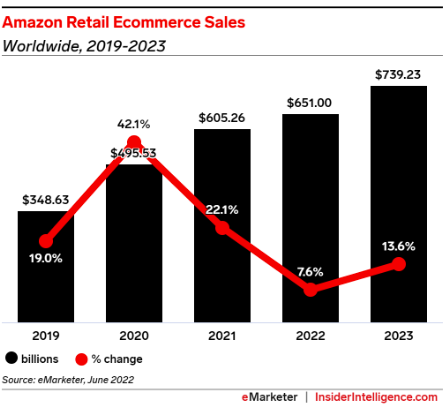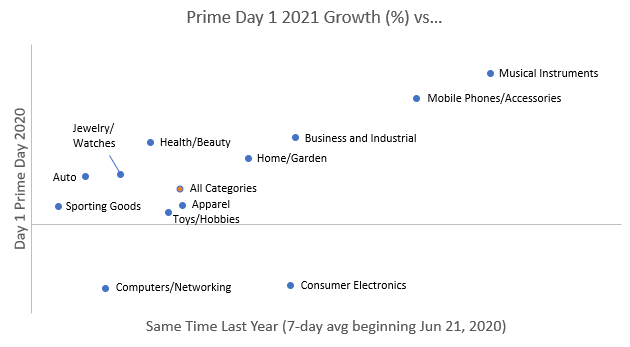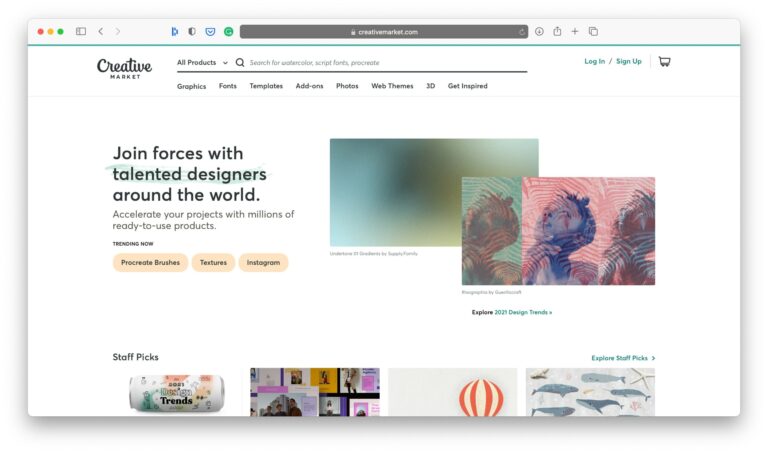In the past two years, the number of digital buyers has grown dramatically due to the boom of e-commerce during the pandemic. Consumers had to adapt quickly and create new purchasing habits around the online world.
But now that brick and mortars have opened again and life is going back to “normal,” what is happening to e-commerce? Let’s take a look at a few stats.
- Total new spending in 2022 is forecasted to be $603.68 billion more spending than 2021, despite e-commerce growth starting to slow considerably
- Retail e-commerce sales worldwide is expected to grow over one third by 2025 — last year, sales grew to nearly $5 trillion for the first time, accounting for more than a fifth of overall retail sales
- Retail media ad spend is predicted to grow 31.4% in 2022 — advertising proliferation and increase in competition has resulted in cost increases and decrease in profitability
- In Q1 2022, Amazon’s ad revenues grew 25% year over year and exceeded those of its physical stores — and at a much higher margin, per its earnings release
So, with Amazon holding to its title of retail media pioneer and retaining number one place among marketplace’s ad spend, we will focus this blog post on exploring:
- Where Amazon is today
- Why Amazon is the place to sell
- How to run a successful advertising program within the marketplace
Amazon During and After the Pandemic
In the last decade, Amazon passed from being a global marketplace to becoming its very own search engine — 54% of consumers start their product search on Amazon when they go online to buy products.
And from a growth perspective, where is Amazon heading?

According to eMarketer, the tech giant is forecasted to drive over $700 billion in retail e-commerce sales by 2023 despite slowing sales growth overall compared to the past two years.
So brands and businesses have to completely rethink their approach toward their advertising strategies if they want to prevail and succeed on Amazon.
The Appeal of Amazon

Successful Amazon Advertising
Success on Amazon depends on many factors, but which one should be on your priority list? Let’s look into the most important ones.
Product visibility
Being seen on Amazon is more difficult every day, as millions of sellers battle for position on increasingly limited screen space. How can you be competitive enough to prevail and increase your visibility on Amazon? The answer lies in a two-pronged approach:
- Focus on content quality to provide customers with a comprehensive description of your products
- Build advanced Amazon advertising strategies to build a bridge between your business and what consumers are looking for
Amazon Ad Formats
Each ad format plays a specific role within the advertising activity and can help you achieve unique goals to ensure full funnel coverage. Also, ad formats allow advertising investment distribution towards maximizing profitability. To drive long-term success and provide optimal results, integrate all ad formats to your advertising strategy. More information on available ad formats is below:
- Sponsored Products. Promote individual listings of your products and reach customers who are familiar with organic listings across the search page results. These ads target mid-lower funnel, so they tend to drive sales volume and offer a high return on investment.
- Sponsored Brands. These ads are positioned at the upper-mid funnel, and can help you build brand recognition and drive more traffic to your Amazon Store.
- Sponsored Display. Based on product and interest targeting, these ads are ideal to extend your reach and connect with new customers. When implemented with intention, they can be a powerful tool for cross- and up-selling strategies.
Campaign Setup
Constructing a solid foundation is key for your advertising activity success. Build clearly defined campaigns that are segmented by similar products or characteristics. Whether you’re pulling reports, organizing product content or segmenting keywords, you’ll stay organized. Here are a few tips for your account plan:
- Test everything and keep learning. The more you experiment with Amazon’s offerings, the better your campaigns will be in the long run.
- Use clear naming conventions. To make all that testing insightful, make sure your account structure can tell a story. Use naming conventions that make sense to you and allow you to gain quick insights without confusion.
- Never stop optimizing. The longer a campaign has been active, the more data becomes available to conduct new tests or make new changes. Get creative with how you look at the data and try to find new and unique areas where you can use your competitive advantages to increase revenue.
Elements of a Well-Run Amazon Advertising Account
While every business is different, well-run Amazon Advertising accounts have certain common characteristics that make them successful. Does your account have all of these elements in place?
Clear Goals
When you set up a new campaign, or even kicking off your company’s Amazon Advertising program, determine what you want to get out of it. And no, “more sales” is not a clear goal. Ensure that the goals you are setting consider all the moving parts of your business and give each campaign a clearly defined role to play.
Granular Strategies
Developing granular strategies means knowing your products and being able to recognize how they can be differentiated from those of your competitors. Ask yourself:
- Are some of your products high margin? If so, you could spend a bit more to win some of your high-converting keywords.
- Does your product receive really high reviews when compared to your competition? Perhaps targeting competitor ASINs with lower reviews makes more sense than keyword bidding.
- Launching new products in a new category? Mining keywords with auto-campaigns may be the quickest way to initiate sales.
- Do you have a strong brand and see a number of competitors bidding on your brand terms? Try breaking out your campaigns by brand and non-brand segments, so you can track key metrics and make sure you are adequately protecting your brand. Then, create an Amazon Store that locks the customer into a curated brand experience where you can control their shopping journey more closely. Lastly, drive customers to this store with Sponsored Brands ads that use keywords related to your brand.
Utilization of All Ad Types
To cover 100% of advertising real estate on Amazon, you have to use 100% of the tools available. Each ad type has different strategies, reports and conversion rates. Get to know them and find out what works. Also get to know the variations within each ad type.
- Vendors (i.e., first party) have access to Sponsored Products, Sponsored Brands and Product Display Ads.
- Sellers (i.e., third party) have access to Sponsored Products and, if you are a registered brand, Sponsored Brands.
All Levers Pulled
Once you’ve started experimenting with all the Amazon ad types available to you, it’s time to start pulling all the levers Amazon provides for making the most of these campaigns. That means continuous testing and optimizing of all the various features to maximize your ROI, including:
- Category and ASIN Refined Targeting within Sponsored Products
- Placement Bid Adjustments
- Dynamic Bidding
- New Automatic Campaign Match Types
- Automated Bidding within Sponsored Brands
- Amazon Stores
ChannelAdvisor’s Complimentary Advertising Analysis
Are you struggling to maximize your return on ad spend (ROAS)? Do you want to improve your ACoS? Or do you need some specific help with your Amazon Sponsored Products or Sponsored Brands?
Request a Complimentary Advertising Analysis and let our digital marketing experts take a look at your advertising accounts to find new opportunities that can help meet and exceed your digital marketing goals.
If you are interested in a more comprehensive guide, you can download our eBook for advanced Amazon advertising strategies here.






